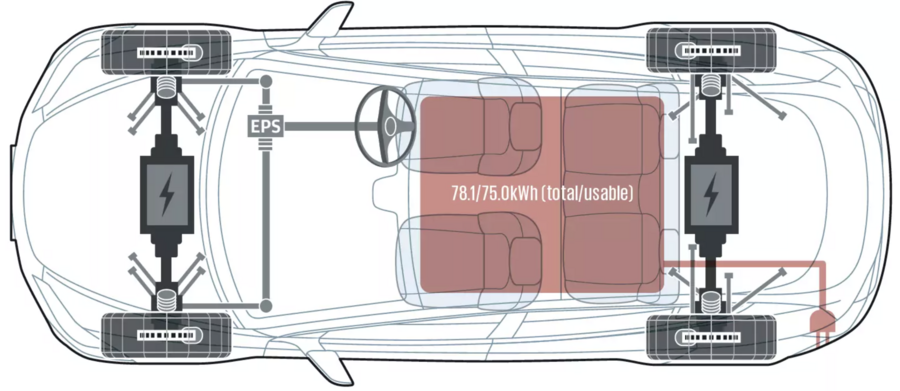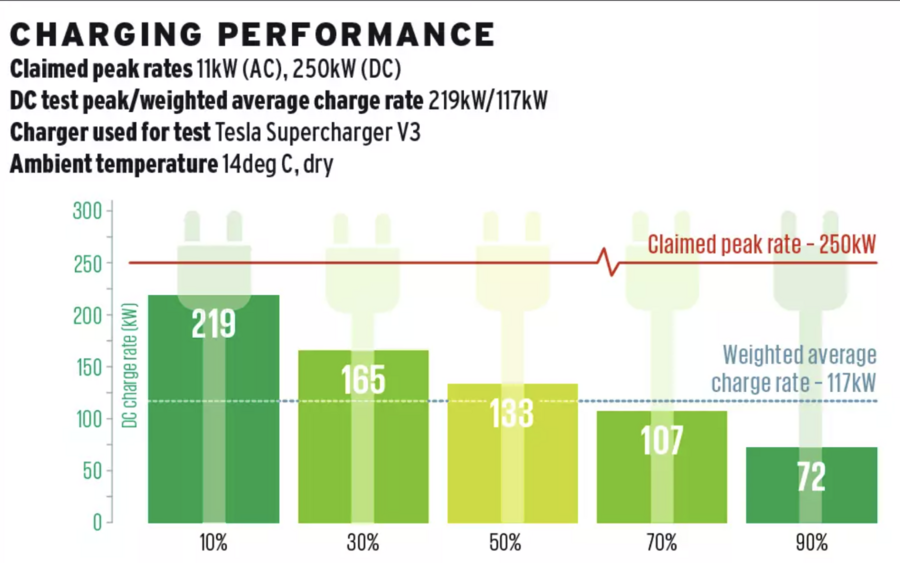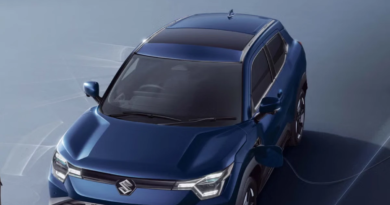Tesla Model 3 review: it’s FINALLY the premium offering the brand has always claimed it was – Autocar
How we test cars
Say what you like about Elon Musk and his wireless brain chips, but when future historians chart the development of personal transport, the Tesla Model 3 will rank alongside Ford’s Model T and the Volkswagen Beetle in its significance.
Admittedly, when this entry-level Tesla arrived in 2017, electric cars already weren’t too unusual a sight, with BMW, Nissan and Tesla itself all having footholds in the market.
However, many years later, they are simply everywhere you look. Musk and Tesla can take credit for this not only directly – after all, so many of the EVs we see day to day are Model 3s – but also indirectly, because this car was a brutal wake-up call for legacy manufacturers. The bug-eyed, California-made EV with a cabin of near-monastic restraint has been a catalyst for change.
And the Model 3 now comes in for a facelift. This update seems long overdue when measured by typical industry standards, but then Tesla isn’t a typical car company, and the product has proved novel enough to justify a delay between launch and update usually only witnessed with supercars.
Still, it is now necessary. In recent years the Model 3 has been joined by the Polestar 2, Hyundai Ioniq 6, BMW i4 and BYD Seal, and these are merely what you might consider the most direct rivals in terms of size and capability.
It means that although Tesla now prices the Model 3 more keenly than ever, the model’s excellent driving range, charmingly uncluttered interior and access to the brand’s Supercharger network no longer guarantee success.
Comfort and perceived quality now matter more. An extensive update in 2025 looked to address these qualities, adding new interior technology, an indicator stalk and upgraded battery packs. It means the Model 3 is capable of 466 miles of range in its rangiest specification, and it has a new rival in its sights: the Mercedes-Benz CLA.
Tesla not only changes its pricing on a whim but also often refuses to divulge the exact power output of its cars, which can make it tricky to know where each model stands in relation to both range-mates and rivals.
The entry-level Model 3 Rear-Wheel Drive still sneaks below £40,000 and represents fine value for money. Spec is generally fixed, the only options being paint, wheels, interior colourway and ‘autonomous’ capability.
Back in 2024, the Model 3 received a substantial facelift, dubbed 'Highland'. Tesla removed the first-generation model's slightly bulbous headlights, replacing them with a sharper, more piercing – if also more traditional-looking – units similar to those seen on the much-delayed Tesla Roadster.
The new lights set the Model 3 apart from the pre-facelift car, and they sit above a resculpted bumper now devoid of intakes or lighting. Exterior changes were otherwise limited to the new tail-lights, and overall the Model 3 remains striking more for its expansive glasshouse than creases in the metalwork.
At launch in 2017, we also commented on the car’s unusual height, but today the Tesla is about as tall as the i4 and lower than the Ioniq 6. It is also shorter than either, but it splits those rivals in terms of its impressive wheelbase, which still isn’t quite as expansive as that of the South Korean car.
The Model 3 originally came from Tesla’s Fremont plant in California in 201. These days, the cars are still built mostly in the US, but many are made in Shanghai, too.
The construction is largely unchanged from before, with a steel body-in-white, passively suspended via double wishbones at the front and five links at the back. In between sits a slim battery pack consisting of comparatively short cylindrical cells, as opposed to pouches.
The specifics of the battery pack have often depended on the derivative and the market in question.
At launch, the same ‘1865’ (each cylinder was 18mm in diameter and 65mm tall) nickel-cobalt-aluminium batteries from the Tesla Model S were used. In time, different NCA batteries were introduced, as well as other compositions, such as nickel manganese cobalt and lithium iron phosphate (LFP).
For the facelifted car, the entry-level Rear-Wheel Drive uses LFP batteries with a usable capacity of 57.5kWh, while the all-wheel-drive Long Range tested here gets an NMC unit of 75.0kWh.
There are practical implications to this. The entry-level model can rapid-charge at up to 170kW but has no recommended limit on battery capacity; the Long Range will hit 250kW at the charging station, but a 90% charge limit is recommended.
Higher-density cells were added to the Model 3's battery structure in 2025, improving efficiency and range.
As a result, drivers can expect a range of 466 miles in the Model 3 Long Range Rear-Wheel Drive, an improvement of 36 miles compared with before.
The entry-level Rear-Wheel Drive variant now offers 344 miles (up from 318), the Long Range All-Wheel Drive can do 445 miles (up from 431) and the Performance's range is 355 miles (up from 328).
Downstream of the battery, the Rear-Wheel Drive gets a 241bhp permanent magnet synchronous motor on the rear axle. For all-wheel drive, Tesla adds an asynchronous motor at the front, allowing free-wheeling and taking the total to an estimated 491bhp.
The Model 3’s cabin was always a ‘love or hate’ proposition.
This is an extraordinarily pared-back environment, and so extreme are the lengths to which Tesla’s designers have gone to remove as much switchgear as possible that you can count the number of physical controls on one hand.
For this latest Model 3 Tesla has reintroduced the indicator stalk, which was previously removed and replaced by a touchpad on the steering wheel spokes.
While the previous touchpad-operated indicators would, in fairness, become more natural to use with familiarity, the return of the indicator stalk does make for a far more user-friendly experience.
We deemed the touchscreen wiper controls, however, to be a serious usability flaw, so we’re glad Tesla has reconsidered and added a button back on the steering wheel.
More unequivocally successful is perceived quality. Material quality and finish in the Model 3 is now commendable and can even be considered as pleasant as its upmarket combatants. You can now personalise the top panel of the dashboard with inserts in a different colour or material, such as a grey textured fabric.
The cupholders have gained a sliding lid, while an almost endlessly customisable strip of ambient lighting runs along the upper section of the doors and continues along the top of the dashboard. Crucially, it all feels more solidly screwed together, with almost none of the creaks that could afflict the old Model 3.
Elsewhere, oddment storage is plentiful, and a combined luggage space of 682 litres (split between a small compartment at the front, the ‘frunk’, and a traditional rear boot) is certainly usable enough and more than the 480 litres you get from an ICE BMW 3 Series.
Two adults will fit in the second row in reasonable comfort, and the panoramic roof and huge glasshouse make this the least claustrophobic-feeling car in the class. Mind you, the Volkswagen ID 7 offers more outright space. 
As you’d expect from a Tesla, its infotainment system feels as though it has been lifted straight out of Silicon Valley. The 15.4in screen may seem almost comically large, but credit where it’s due: it’s difficult not to be impressed by the quality of its graphics and the slick manner in which it operates.
Unlike with rival systems, you rarely need to tap twice to access a function or menu, while on the whole the layout is logical and easy to follow – which is a good thing when you consider it’s used to operate everything from the windscreen wipers to the heating, ventilation and air conditioning. Even so, a few physical controls for the most frequently used functions wouldn’t go amiss.
At least it isn’t short on toys, not in the literal sense at least. In addition to features such as sat-nav, Bluetooth and DAB radio – the sort of things you’d expect from a circa-£40,000 compact saloon – there are some more, let’s say surprising, features. Such as a digital whoopee cushion and a full suite of arcade-style games.
The genuinely useful Apple CarPlay and Android Auto remain absent, however.
For the latest version of the Model 3, rear-seat passengers can get in on the infotainment action thanks to the addition of an 8.0in touchscreen mounted between the front seats. From here occupants can adjust the air-con as well as access various multimedia functions.
Moreover, there are also a pair of 65W USB-C ports that allow rapid charging of devices such as smartphones and laptops.
Few cars offer up performance as easily as the Model 3, and the car’s almost toy-like demeanour belies the magnitude of its abilities.
Even entry-level rear-wheel-drive cars will shift from 0-62mph in just 5.4sec. This drops to 4.9sec in the Long Range Rear-Wheel Drive models, and further to 4.2sec in the AWD variant. The frankly ludicrous Model 3 Performance will do it in a staggering 2.9sec, which is faster than most supercars.
Our Long Range Rear-Wheel Drvie model recorded a 0-60mph time of 4.4sec, putting it just three-tenths behind the BMW i4 M50 (a car for which its maker charges more than £72,000) we tested in 2022. The Tesla is a comparative bargain when it comes to straight-line pace.
As for overtaking proficiency, the American car generally gets the better of its German rival, needing only 1.7sec to surge from 40-60mph, compared with 2.3sec for the i4 M50 (the BMW did have to contend with a slightly damp surface in fairness).
What’s refreshing about the Tesla is that even if you slam the accelerator pedal to the floor, it doesn’t shunt itself forward in an agitated flurry of wheelspin and panicking traction-control intervention.
The ramp-up of acceleration is smooth and traction is generally excellent. This is an intuitive car in which to accelerate out of bends, the efforts of both motors making short work of our car’s tested weight of 1846kg (it's a positive flyweight next to the BMW’s 2284kg).
A stint in the dual-motor Model 3 offered similarly smooth power delivery, and it made excellent use of its all-wheel drive system to plant its power onto the road.
Braking is another matter. Stopping distances are nothing special, but an ambiguous pedal feel is the main bugbear, failing to instil quite enough confidence in such a fast car. This is probably specific to the all-wheel-drive Model 3, mind. Pedal progression in the Rear-Wheel Drive version is better.
A sophisticated method of cycling the car’s regenerative braking calibrations is the only thing really conspicuous by its absence in the driving experience. When other EVs offer one – and by doing so make it possible both to better engage with the car when driving quickly and to eke out better energy efficiency when driving gently – the Model 3 plainly should as well.
Even so, the one-pedal mode is nicely tuned, allowing you to complete most journeys without ever having to use the friction brakes.
It has been observed that Teslas in some ways steer like mid-engined supercars. Perhaps that’s in some way to be expected, given the company’s first-ever production car, the Roadster of 2008, was built on Lotus Elise architecture.
Quick steering and short, firm springing give the Model 3 a directional sensitivity you won’t find even in the BMW i4, and though it can take a moment for the driver to acclimatise to this, it helps to make the car feel fun and engaging, even at low speeds.
Of course, the Model 3 doesn’t weigh what a Ferrari, a Pagani or a Lamborghini weighs, and wherever it hides away the majority of that mass, you can feel its influence in almost every move that the car makes.
So, although the front axle bites into a bend almost the instant you move the wheel off dead-centre and the firmly set suspension resists body roll very effectively, it takes an instant or two for the car to settle into a cornering stance and feel stable enough to allow you to begin driving it out.
The quick steering is surprisingly sensitive (to sneeze on the motorway is to change lanes – various driver aids permitting, of course) and there’s very little in the way of feedback, regardless of whether you select Comfort or Sport mode.
It means the Tesla turns in keenly with strong front-end bite, while the pendulous effect of its hefty mechanical components helps mid-corner rotation if you have a small lift of the throttle. This effect is more pronounced in the RWD model, though both derivatives will trim their line with a well-timed, mid-corner lift of the accelerator – again, very supercar.
It’s just a shame that the ESC tuning is quite intrusive and non-switchable – the car is naturally well balanced enough for more leniency to be permitted by the system.
There’s not enough feel from the controls or ultimate body control to make this a truly sparkling sports saloon, while the electronic safety net kills any throttle-adjustability as soon as slip is detected. The BMW i4 eDrive40 is a more balanced and biddable electric saloon.
Improving refinement and comfort was, by Tesla’s admission, one of the main aims of the facelift. The official literature talks of 30% less wind noise, 20% less road noise and a 30% increase in ambient noise isolation.
All of which is welcome, given the Model 3’s weakness in the past in matters of rolling refinement. New acoustic glass, less aerodynamic drag, retuned rubber suspension bushes and quieter tyres have all been deployed for the facelift, in an effort to improve refinement. Has it worked?
According to the road test microphone, it certainly has. Our 2024-model-year, all-wheel-drive car proved notably quieter across a range of speeds than the RWD example we tested five years ago. In fact, the readings were an exact match for the BMW i4, save for the one taken at 70mph, at which speed the Tesla was one decibel louder.
The updated bushings are joined by subtly revised geometry and new wheels and tyres in a bid to smooth out the car’s previously stiff-legged ride. Unlike noise isolation, this hasn’t made much of a difference.
In general, ride comfort is below par for suppleness and bump absorption on less than smooth roads. The firm suspension springing that makes the Model 3 enjoyably taut on a good B-road also makes the body busy and fidgety.
Back in 2017, having only recently made its debut, the Model 3 Standard Range offered 254 miles while the Long Range punted that up to 348 miles.
These figures have increased incrementally over the years, and with this facelift, the baseline figure is now 344 miles. The Long Range All-Wheel Drive gets 445 miles, and the Performance gets 355 miles. The headline figure, however, is 466 miles offered by the Model 3 Long Range Rear-Wheel Drive.
And in the real world? Our dual motor test car averaged 4.0mpkWh in motorway driving, for a touring range of 312 miles. It returned 4.4mpkWh in mixed use, for a day-to-day range of 343 miles.
As ever, the Model 3 also has a massive advantage up its sleeve: access to a network of reliable and accessible public rapid chargers in addition to all the third-party rapid chargers. Of course, Tesla’s Supercharger network remains the car’s default choice and is what the sat-nav will automatically guide you to if you don’t have enough range to complete your journey.
The updated Model 3’s starting price of £39,990 makes every vaguely comparable rival look expensive, but there are a few catches. Don’t want white? That’ll be at least £1300 for blue or black. Want the nice 19in wheels in the brochure? That’ll be £1500. White interior? £1100.
However, buyers should exercise the utmost caution when considering the Full Self-Driving Capability. It costs £6800 and, in our experience, performs inconsistently, even within the somewhat limited scope permitted by UK regulators. 
The Model 3 is one of the more compelling cars of its era, and on the basis of this test – and some undeniably attractive pricing – its broad appeal looks set to continue.
Even in its cheapest, lowliest form, this Tesla blends competitive saloon car practicality, striking performance and reasonable handling dynamism in a manner that makes it a fine all-rounder, irrespective of its powertrain type. It’s going to be fascinating to see how BMW’s much-anticipated Neue Klasse saloon fares against its American foe.
The Tesla isn’t perfect, mind. It’s still no dynamic high-water mark, despite the near-super-saloon straight-line pace of the dual-motor car, and its ergonomic eccentricities continue to grate. Neither is it the most relaxed tourer, which is a shame because the Long Range has impressively long legs.
And yet the fact remains that the Model 3 is simply an enjoyable thing to rub along with on a daily basis, and quality improvements also mean it feels like the premium offering the brand has always claimed it to be.
Richard is Autocar’s deputy road test editor. He previously worked at Evo magazine. His role involves travelling far and wide to be among the first to drive new cars. That or heading up to Nuneaton, to fix telemetry gear to test cars at MIRA proving ground and see how faithfully they meet their makers’ claims.
He’s also a feature-writer for the magazine, a columnist, and can be often found on Autocar’s YouTube channel.
Highlights at Autocar include a class win while driving a Bowler Defender in the British Cross Country Championship, riding shotgun with a flat-out Walter Röhrl, and setting the magazine’s fastest road-test lap-time to date at the wheel of a Ferrari 296 GTB. Nursing a stricken Jeep up 2950ft to the top of a deserted Grossglockner Pass is also in the mix.



